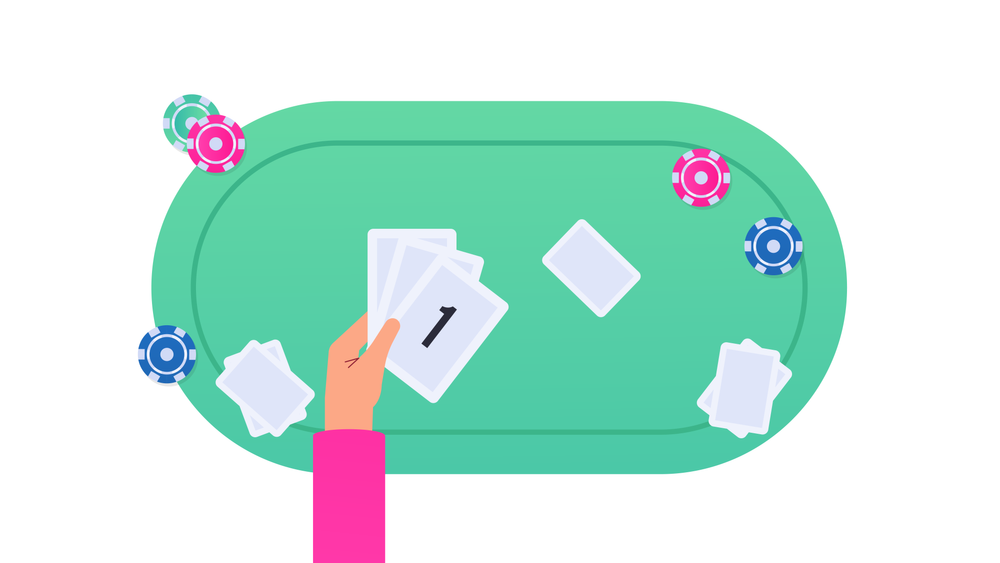A beginner's guide to the Planning Poker estimation technique

Planning poker is one of the most fun and popular ways to estimate the length of your project, but how does it stand out from other planning methods?
If you ask us, it’s the characteristics of the planning poker estimation technique that make it so unique.
What is the planning poker estimation technique?
Planning poker was invented by James Grenning after a particularly slow and boring meeting.
The energy was low. And team members were spending unnecessary minutes debating an estimate… before arriving at the exact same conclusion they’d had before the meeting took place. In his proposal paper, Grenning said exactly what everyone thinks after a meeting like this: “You just wasted 20 minutes of valuable time”.
The game rose to prominence thanks to Mike Cohn of Mountain Goat Software. In his book ‘Agile Estimating and Planning’, Cohn adapted the planning poker game to use a modified sequence of numbers that are optimized for reporting. Cohn now owns the trademark for the Planning Poker name.
The game is fairly simple to understand. Product features or deliverables are assigned to a numerical score based on the current user story. This score is the number of “story points”, which can be fed into planning and forecasting processes.

How does Planning Poker work?
Step 1: Hand out the cards
Participants are all given a deck of cards. These can be regular playing cards or custom Planning Poker cards. Each card will have an assigned value, such as 0, 1, 2, 3, 5, 8, 13, 20, 40 and 100 (as is suggested by Mike Cohn).
If you’re playing with regular cards, you’ll need to work out a theme for yourself — for example, you could assign 100 points to the King of Hearts. The values represent the number of story points, ideal days, or any other units the team uses to give estimates.
The decks are limited, with significant number-jumps, because the goal is for all participants to reach a consensus number for each story. Giving participants too many options, such as every number between 1 and 50, would make the process inefficient as the scores could end up looking too similar across the board.
Step 2: Read the story and discuss
Whoever is running the session will read out the user story to the group. This is immediately followed with a discussion about possible ways to approach the goal, estimate how many people they will need, which skill sets will be required, and any potential issues they can see popping up.
The group can also use this time to clarify anything they’re unsure about.
Step 3: Estimate and share
Once everyone is on the same page with the user story, it’s time to play poker.
Each participant will secretly choose a card from their deck to represent their story point estimation. When everyone has made their choice, the team reveals their cards at the same time. The higher a participant’s card is, the more difficult that participant estimates the story will be to complete.

Step 4: Discuss results and aim for consensus
It’s unlikely that everyone will reveal the same card. But if they do, that number will become the official estimate and the team can move on to the next user story.
If the cards differ, the team will need to continue the discussion about this user story. Those who have played a card that’s higher or lower than the general average will explain their thought process — with the aim of convincing the rest of the team to agree.
When the second round of discussion ends, the team will play again. Depending on how the discussion went, they will play a different card that matches the points that were made, or simply play their original choice again if not convinced.
If the team chooses to play the same cards as the first draw, the outlying vote will be taken out of the running and the average rating will be used as the estimate.
What makes the Planning Poker technique so unique?
We can all relate to the idea of being stuck in a boring meeting that offers absolutely no value to the project, and that’s why the Planning Poker technique has become so popular. What better way is there to keep your team engaged than an entertaining little game that puts the fun back into the workplace?
Aside from being great fun, Planning Poker stands out from the other planning methods thanks to the range of benefits that it can bring.
Relativity
One of the immediate benefits of Planning Poker is that it allows you to estimate tasks relative to one another. Much like an AI would use machine learning to compare previous sprints or projects to help guide its estimation, the planning poker technique allows you to compare the work required to work that’s already been completed in order to select a card.
As each session is now using the same metrics, the team can look back on previous Planning Poker sessions and look at how accurate the estimates were. That experience can then be used to tailor their opinions in the next round.
Improving estimations and continuous learning
One of the most unique characteristics of the planning poker technique is that you create a culture of continuous learning. With each round, you start to learn how each team member thinks and operates.
You can identify team members who maybe need a little more support if they’re always assigning higher values to tasks or find ideal pairings for collaborative tasks. Of course, on the other hand, there are some team members that will often underestimate tasks and subsequently don’t get their work done on time.
Planning Poker can essentially remove the over and underestimating that can happen with a single person’s decision. Team members who play the smallest and highest estimate will explain their decision with the group, maybe offering a fresh perspective. By the end of the process, your team is all in agreement and can choose the most accurate estimate on the table.
Another great suggestion is to break down complex tasks into smaller tasks. Set a limit using whichever metric you have chosen, and if the consensus is higher than that number, split the task into subtasks and play again. Breaking a task down into smaller chunks and estimating those, rather than estimating the overall task, is one of the best ways to get accurate results.
It’s worth taking into consideration how many people will be needed for a task, too. If a task will only take 1 hour, but requires 3 team members, you would rate that as if it was a 3-hour task.
Share insights
As two team members with the highest and smallest estimation will explain their decision, the team will see what makes the solution look complex or simple. Maybe there are some people on your team who are more experienced with the resources you’ll be using, or have experienced similar issues in previous sprints.
These added insights can help the team estimate and plan far better than if it was left to a single person.
Clarify everything before you get started
Planning Poker provides ample time to discuss anything and everything you may need. This means that any questions or confusion a team member may have, they can gain clarity from the product owner, product manager, or even their fellow team members before drawing their card.
How accurate were your estimates after all?
Now you know how to plan your sprint or project, you also need to know what to do once the sprint is over.
Sprint retrospectives offer a look back on what went wrong and what went right, allowing you to make adjustments to future rounds of Planning Poker. And who has the best resources to make your retrospectives great? That’s right, the EasyRetro blog. Check it out today.